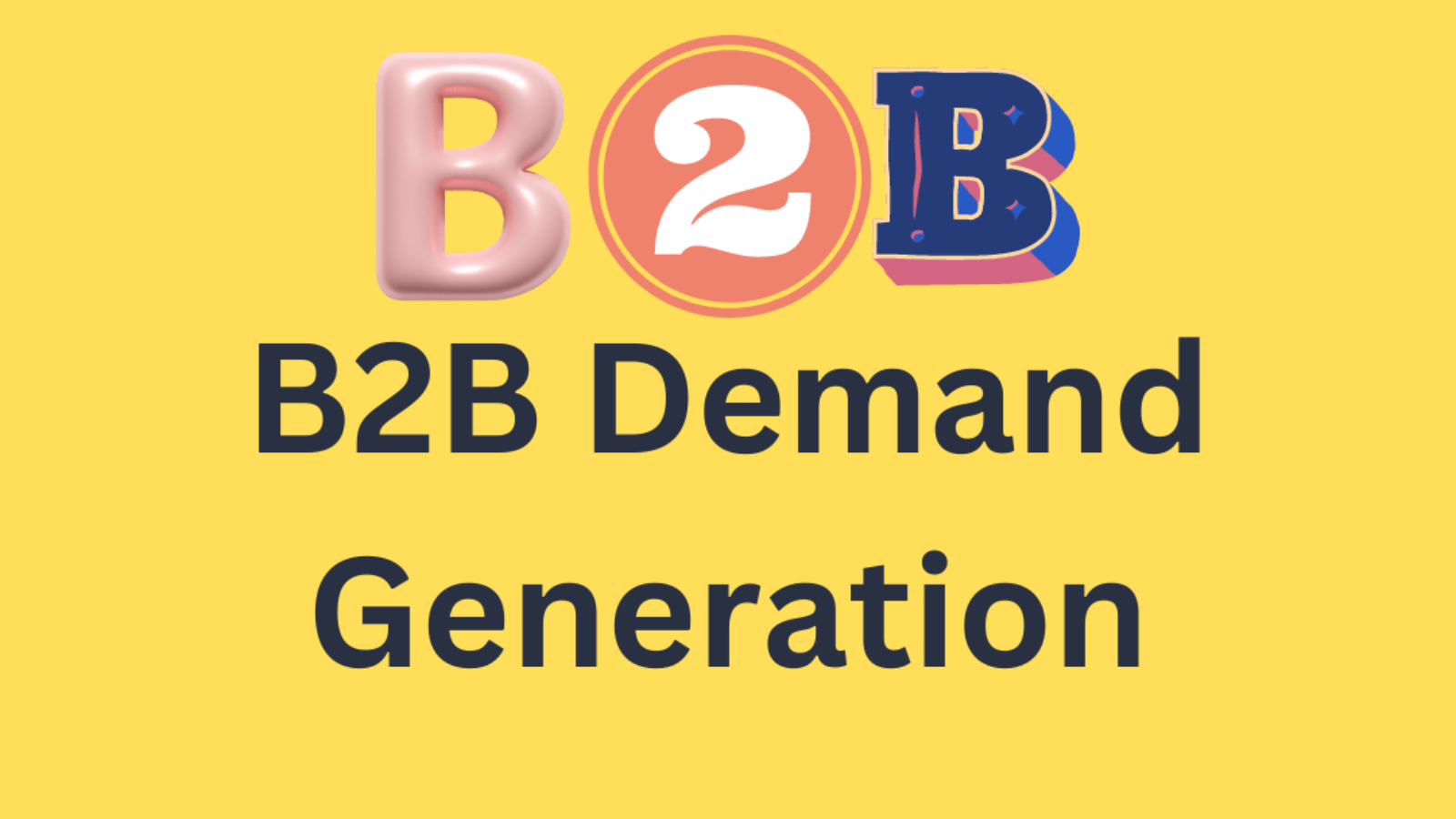Introduction
In today’s competitive B2B landscape, simply having a great product or service isn’t enough. It requires you to actively create demand by piquing attention and directing prospective buyers toward your business. Enter the dynamic world of B2B demand generation.
Table of Contents
A. What is B2B Demand Generation?
Think of it as the engine that fuels your sales pipeline. It’s a strategic approach that cultivates awareness, educates your target audience, and ultimately, compels them to consider your solution.
B. Why is Effective Demand Generation Crucial?
- Boosts brand awareness and visibility.
- Generates qualified leads for your sales team.
- Reduces sales cycles and accelerates growth.
- Positions your brand as a thought leader.
- Builds stronger customer relationships.
C. The Power of a Comprehensive Approach
Successful demand generation isn’t about isolated tactics; it’s about a symphony of interconnected strategies. This guide will delve into each instrument, creating a unified orchestra that drives business success.
Understanding the B2B Orchestra
II. The Players: Defining Your Target
- A. Creating Detailed Personas – Uncover the needs, challenges, and behaviors of your ideal buyers.
- B. Mapping the Journey – Understand the stages potential customers go through, from awareness to conversion.
III. Building the Stage: Setting the Foundation
- A. Data-Driven Strategy – Leverage data to personalize content, target the right audience, and measure results.
- B. Integrated Marketing & Sales – Break down silos and work together for seamless lead nurturing and conversion.
IV. The Performance: Content Marketing Takes Center Stage
- A. Creating Valuable Content – Craft blog posts, ebooks, webinars, and videos that resonate with your audience.
- B. SEO Strategies for B2B – Optimize your content for search engines to attract organic traffic.
V. Multi-Channel Marketing: Expanding the Reach
- A. Email Marketing – Send targeted campaigns, segment your audience, and personalize messages.
- B. Social Media Engagement – Choose the right platforms, connect with potential customers, and leverage social selling techniques.
VI. Lead Nurturing & Scoring: Keeping the Melody Flowing
- A. Building Relationships with Leads – Nurture leads with personalized content, campaigns, and automation.
- B. Lead Scoring Techniques – Identify sales-ready leads and tailor your approach based on their score.
VII. Technology & Automation: The Conductor Behind the Scenes
- A. Marketing Automation Tools – Streamline tasks, manage workflows, and personalize interactions.
- B. CRM Integration – Connect marketing and sales efforts for a unified view of the customer journey.
VIII. Analyzing & Optimizing: Refining the Performance
- A. Data Analytics for Demand Generation – Track key metrics, analyze campaign performance, and identify areas for improvement.
- B. A/B Testing & Continuous Improvement – Test different approaches, learn from results, and constantly optimize your strategies.
IX. The Encore: Case Studies & Future Trends
- A. Success Stories of Comprehensive B2B Demand Generation – Get inspired by real-world examples.
- B. Future Trends in B2B Demand Generation – Stay ahead of the curve with insights on emerging trends.
Conclusion
By implementing a comprehensive B2B demand generation strategy, you can transform your marketing efforts into a well-oiled machine, generating qualified leads, driving sales, and achieving sustainable growth. Remember, the performance is never truly over; continuous learning and adaptation are key to staying ahead of the competition. So, pick up your conductor’s baton and start creating your B2B demand generation symphony!

